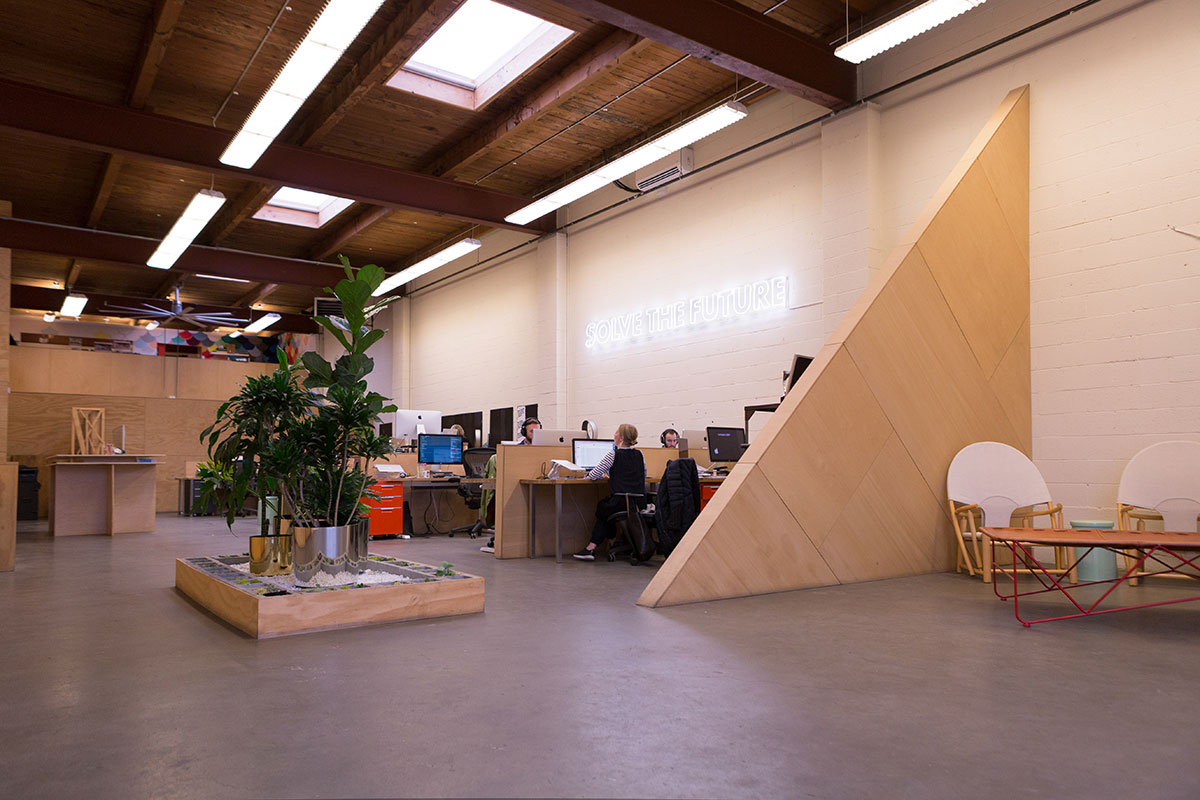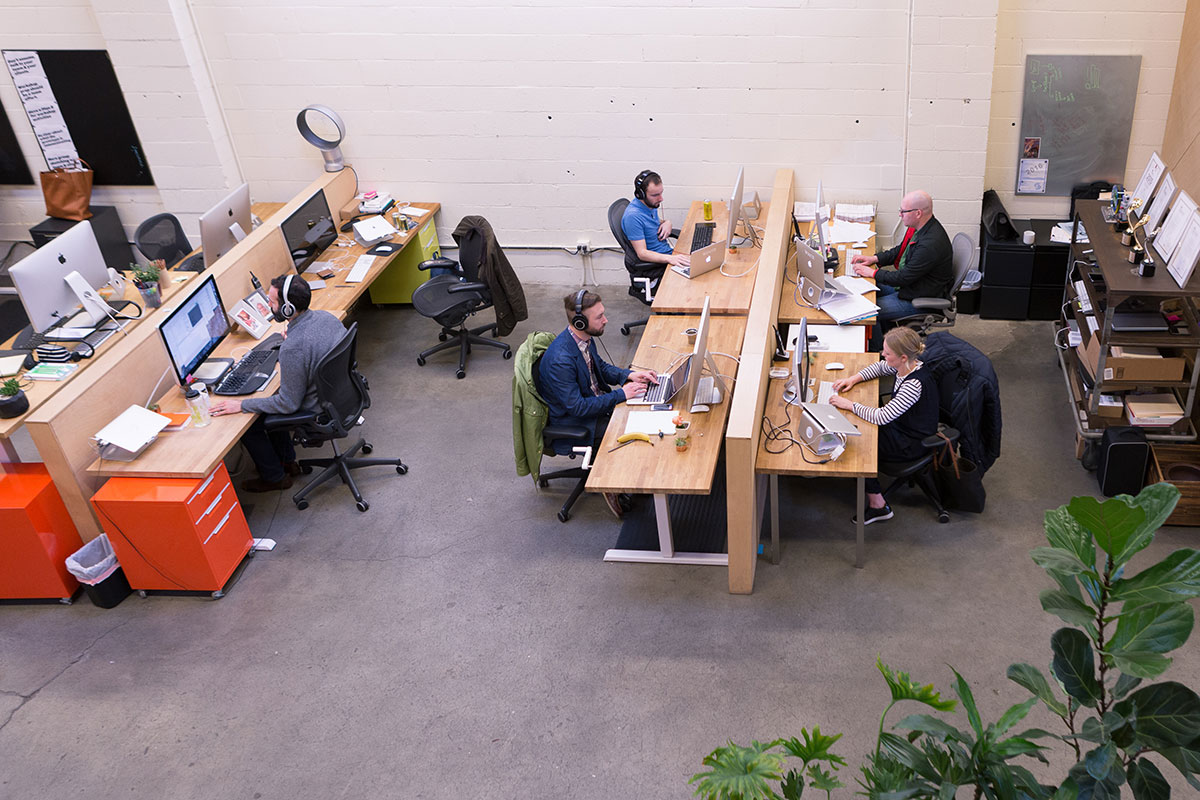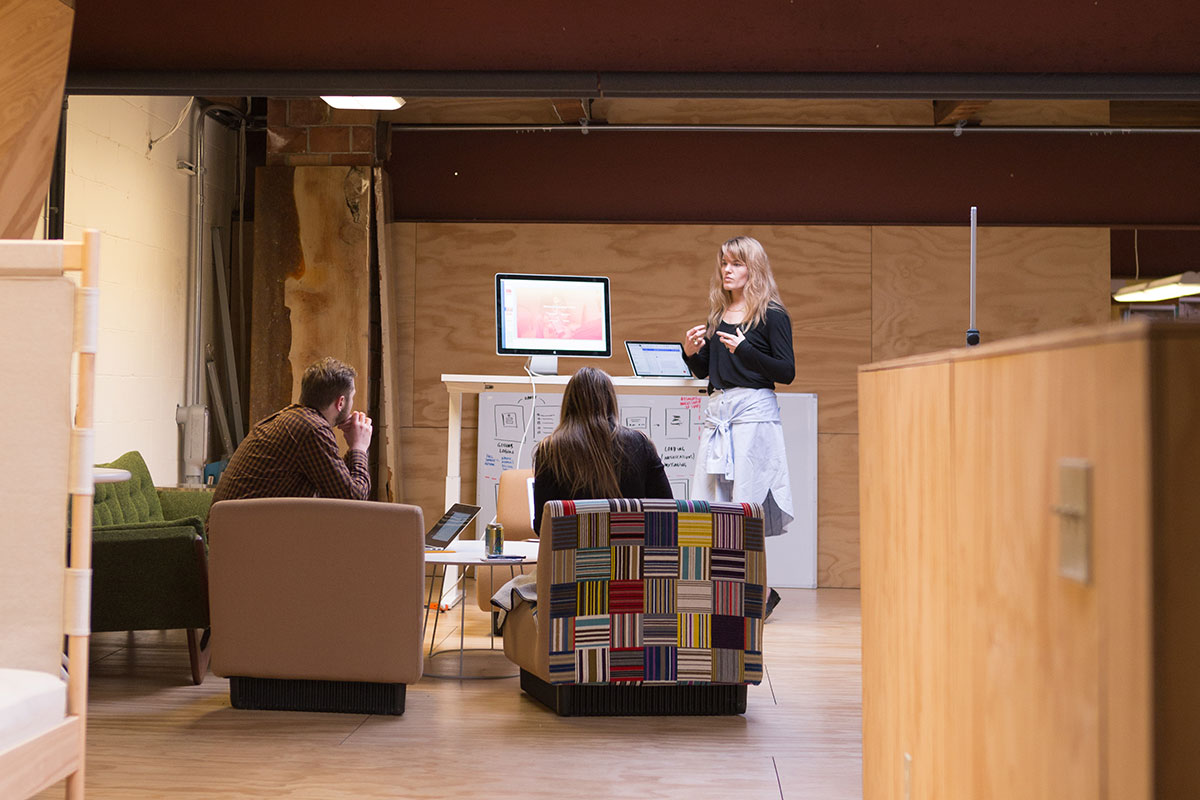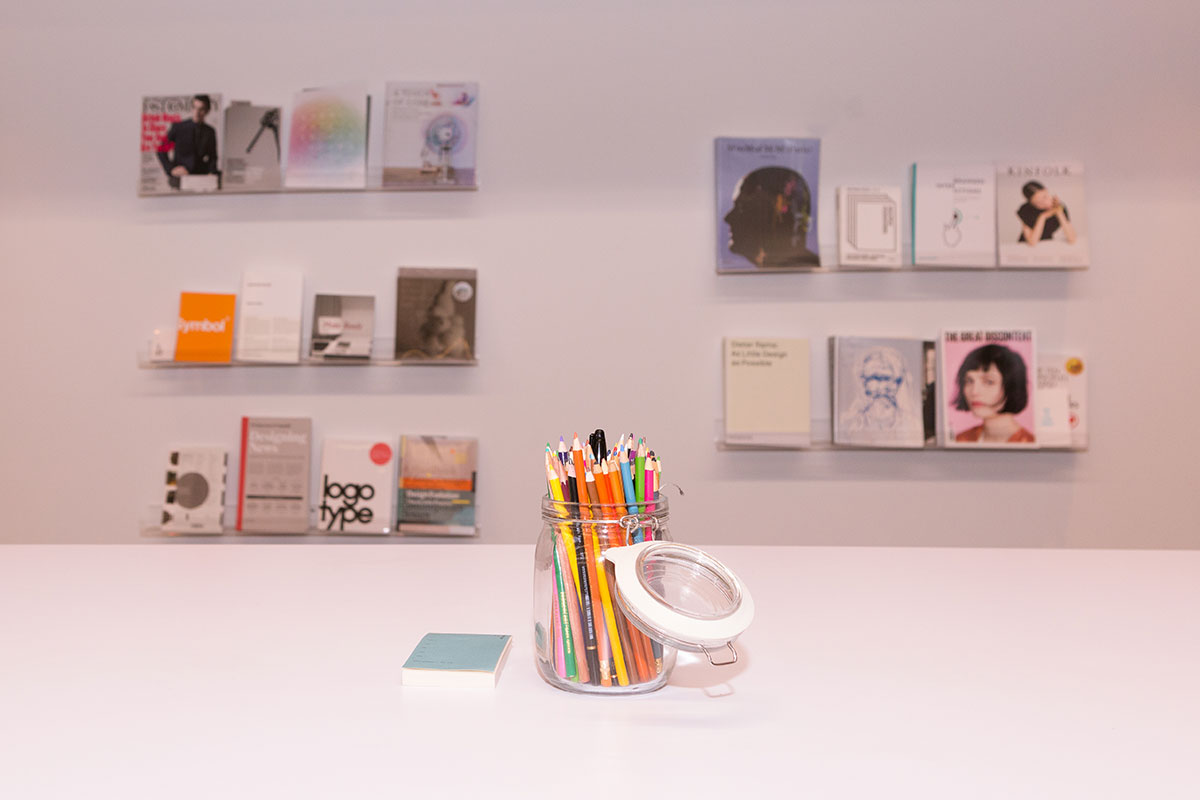WINTR is a design and technology company that embraces the interrelationship between strategy, design, and technology. As guest speakers they shared their unique approach and their collaborative, empathetic, and thoughtful generation and iteration that has made them a key player in the design world. Here at Seattle Central Creative Academy we see value in partnering with leading creatives to expand and connect the creative work in our program and beyond, and that all of our work is deepened in the process of learning about each other. We recently got a chance to visit WINTR’s office and speak to a number of their core team.

The “Solve The Future” mission is featured upon entering their Fremont work space. Photo by Amanda Umberger
You’ll find WINTR’s spacious office tucked behind an unassuming Fremont door. Designed by the agency’s founders, its spacious and welcoming. On the wall behind the collaborative work stations is their bright, neon sign glowing with the mission: “Solve the Future”. It is very clear WINTR is doing just that. With a team of 15 experts, WINTR is constantly pushing itself to their full potential strategically and creatively.
A major pillar of WINTR’s approach is their culture of collaboration and empathy, evident in their workplace plan. WINTR intentionally incorporates opportunities for group work share hours, championing achievements and connection across departments. This approach, in the context of their environment surrounded by bookshelves full of design books and quarterlies make clear that WINTR takes to heart lifelong learning and growth as essential pieces of their workplace philosophy.

WINTR’s entrance and waiting area. Photo by Amanda Umberger.
We asked some questions of WINTR’s core team. Strategists Taylor Kieburtz and Dan Romanow, designer Lauren Mae Celenza, and engineer Nick Cox weighed in.
Who have been the greatest influencers on you as a designer and on the design approach and company culture at WINTR?
I am not a designer by trade, however as a Strategist I help to identify the opportunity for design to create or improve experience. That said, I respect design’s value and understand why, when and how to apply it to big challenges our client’s face in order to bring their business goals more in-line with the intent of their audience. There are a number of influencers I credit with helping me to shape my perspective on Design (capital D to indicate it it s a method and not just a skill set). To name a few; Dieter Rams because I value simplicity. Frank Chimero and his ‘accidental’ writings that help make sense of micro movements and macro shifts in design that impact us all. IDEO is another and their formative influence on human-centered / user-centered design and best practices.
-Taylor Kieburtz (Strategist)

Open concept work space connects design, strategy, and engineering teams. Photo by Amanda Umberger
Reading the words from Dan Romanow on your blog: “We — humans — are pretty terrible interview subjects. We want to seem agreeable and meet the expectations of the interviewer; we struggle to identify solutions that don’t yet exist or understand the underlying causes of friction we experience.” I am struck by the paralyzing obviousness. Tell us more about how your practicing of empathy is, well, practiced. How does that play out in a design process?
In our industry it’s become commonplace to assume that we, the creators of products are services, are the intended audiences for those products and services. When in fact, we’re not. Our audiences are real people with diverse backgrounds, aspirations, needs and desires. We leverage empathy as a tool to get out of our own way, out of our own heads, and to better understand how our creations are able to impact people’s lives in a tangible way. Empathy then becomes a compass of sorts, helping us steer our efforts and make decisions not from our own needs and desires, but those of our audiences. We’ve leveraged this approach, for instance, to understand that our client’s site, which was thought to serve a single audience, was actually utilized by three very different segments with very different needs. Through testing, data analysis and usability studies, we understood where those audiences went and for what reason, and crafted an experience just for them. Holistically the experience still communicates a singular brand narrative, we were just able to pivot how we told the story based upon the most likely audience and their unique set of needs.
-Dan Romanow (Strategist)

Pictured here Taylor and WINTR team meet in the loft built to create smaller spaces of collaboration. Photo by Amanda Umberger.
Many designers describe intuition, or gut instincts as the best guides of work. How does your company cultural work approach this? As in, does your empathic innovation or strong feelings on a design ever run contrary to gut instincts?
For designers, instinct feels like a natural starting place, but we like to go further and test our instincts. We frame our instincts as a hypothesis, that way when we conduct user research or testing, we can test that hypothesis by putting the focus back on the user. It comes down to gathering data and practicing empathy– analyzing the actual data we receive and the situation the user is actually in, not just the situation we think they are in. Sometimes our instincts are right, and sometimes they are wrong, and when they are wrong it helps us to know when to recalibrate our approach to problem solving. All in all, it’s a nuanced combination of testing our instincts and keeping an open, flexible mind when making design decisions.
-Lauren Mae Celenza (Designer)
It’s rare for developers to rely on intuition or gut instincts. Or perhaps more accurately put, it’s rare that developers to cite intuition or gut instincts as the guides of their work. In the absence of demonstrable proof (for example, that a certain implementation of an algorithm is faster than another), the norms of a programming are the only subjective measure that it tends to be acceptable to rely on. In other words, if you’re not able to prove an assertion beyond a reasonable doubt, your code should at least rely on the standards put forth by a community. There are static code analysis tools that ensure that your code adheres to certain standards (indentation, variable names, etc.), and while the standards themselves can be subjective and subject to debate (Should we indent with two spaces? Four? One tab?), their adherence isn’t (the computer can always tell how you indented, and whether that agrees with the standard you’ve told it your code is adhering to).
-Nick Cox (Engineer)

Design books and quarterlies line the walls. Photo by Amanda Umberger
What is the most exciting part of being part of the Seattle design and creative community? What do you think is the greatest yet-unrealized potential of our region’s creatives? What do you see as our next step?
The past 3 years have been an especially exciting time to be in Seattle for a number of reasons stemming from growth. During such times, there is bountiful opportunity for anyone thinking outside the box, which is often the creative community. The effects are greater than the boundaries of our region. For example, there’s a lot of curiosity right now about the PNW in the global creative community which makes it even easier to connect with each other. I hope that we’ll soon realize the full potential of more talented people staying or coming back to Seattle that would have otherwise left for greater opportunity elsewhere. As a community, I believe our next step is to build a support system that is lacking for people new to Seattle or just starting out in their career. People are pretty insular here and the standard for events has lacked the attention of designers necessary to draw others in, let alone a welcome attitude of community.
-Taylor Kieburtz (Strategist)
For a look at their stunning work check out wintr.us
If you liked what you read here and want more of their design thinking, visit wintr.us/blog.